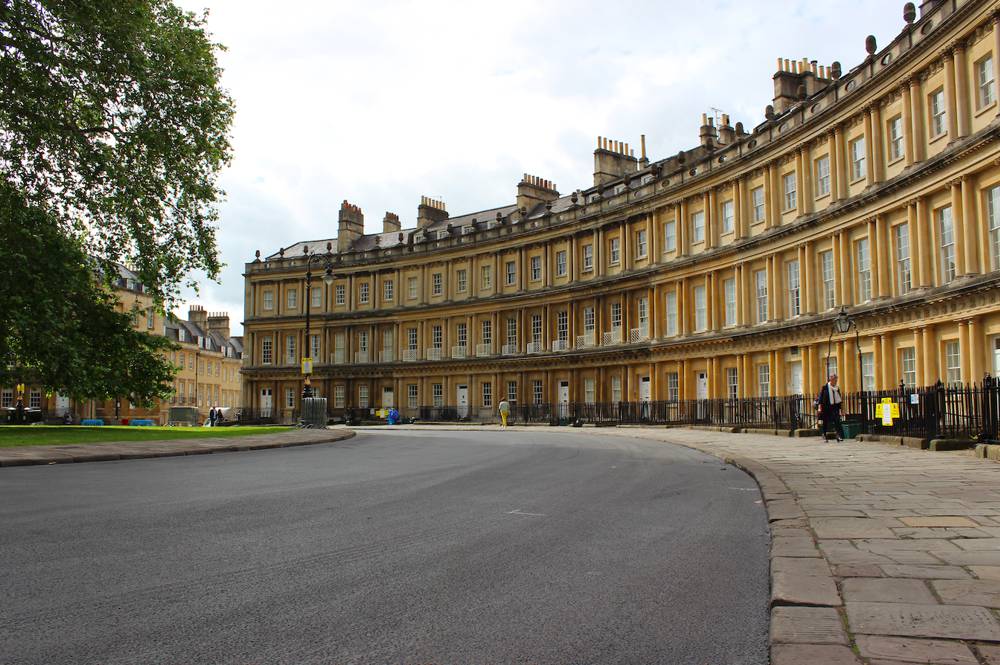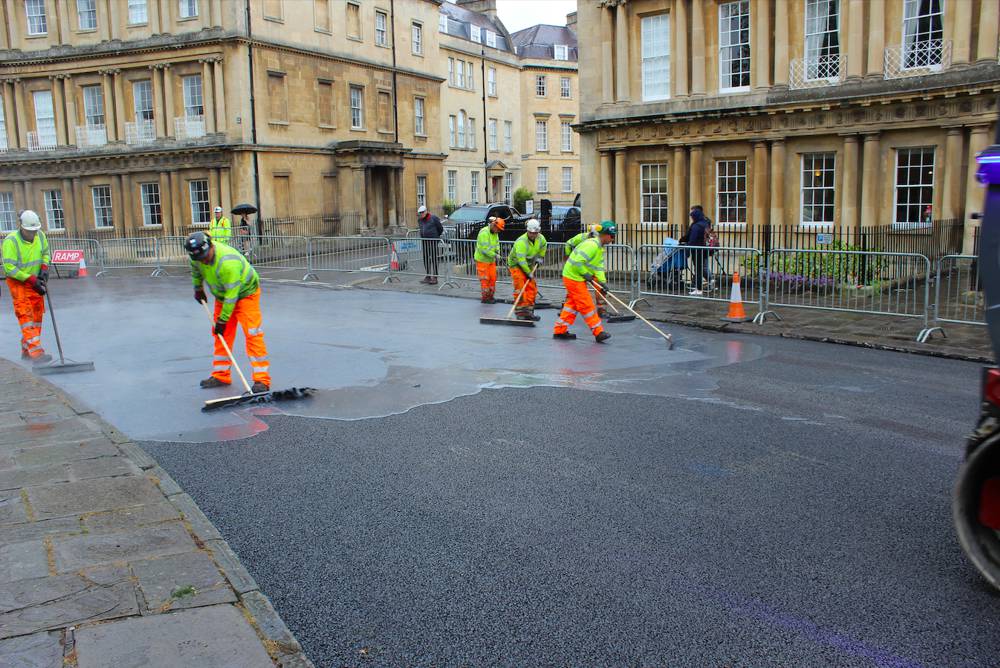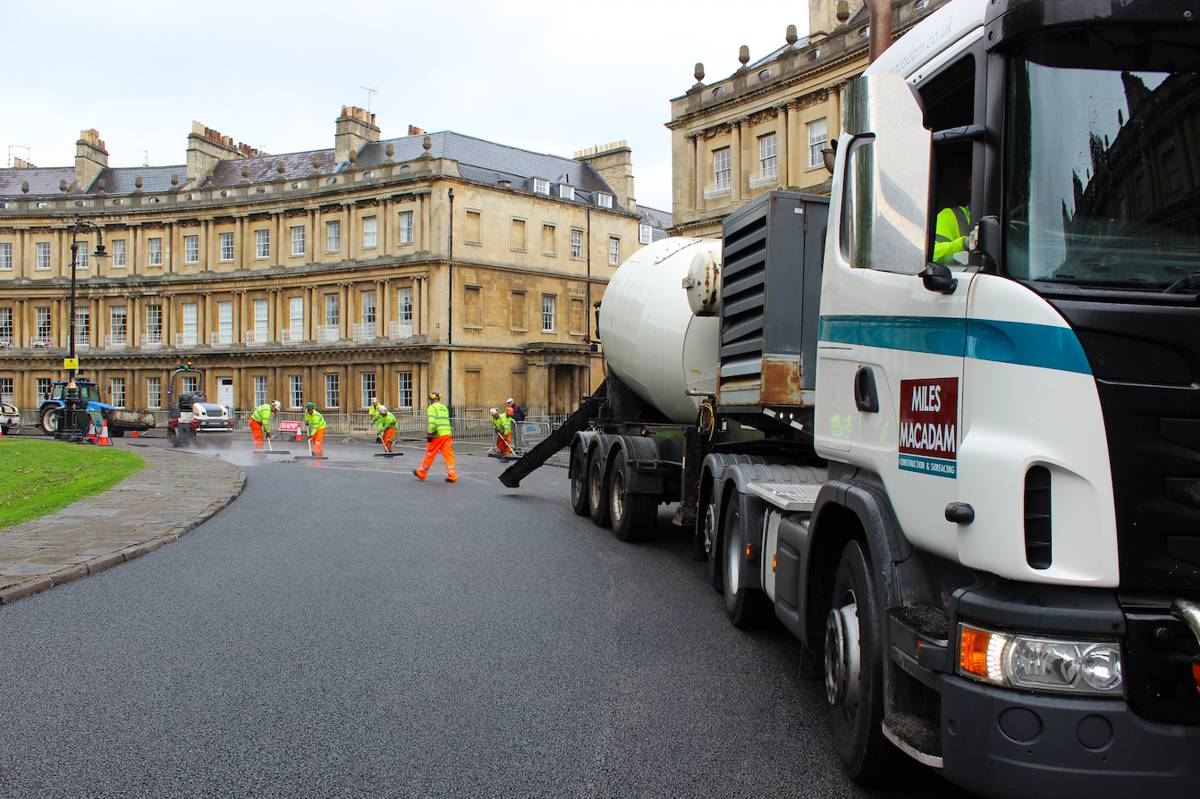Miles Macadam complete resurfacing project at the historic Circus in Bath
Specialist surfacing company, Miles Macadam, has completed resurfacing works for Bath & North East Somerset Council and Volker Highways, at the historic Circus in Bath.
Miles Macadam has completed works for Bath & North East Somerset Council and Volker Highways to resurface The Circus in Bath, a historic street of large townhouses in the city of Bath, Somerset.
The circle has three entrances and was designed by the prominent architect John Wood, the Elder. Built between 1754 and 1768, it is regarded as a pre-eminent example of Georgian architecture.
Due to the issues of historic concrete road construction and specialist nature of the project, Miles Macadam was selected for its diligent reputation and established track record in the treatment of concrete carriageways.
More specifically, its own manufactured HAPAS approved Milepave™ Grouted Macadam was chosen to resurface The Circus, using a total of 1,900m2 of Milepave™, heavy duty asphalt surfacing to guarantee quality and longevity for a project of this nature.
During the works, which took three days to complete, Miles Macadam ensured that disruption to residents was kept to a minimum and carried out detailed planning and phasing of works to ensure the successful delivery of the project.
The process was carried out under an agreed road closure, with careful planning and traffic management of the site required due to the number of tourists and pedestrians that frequent The Circus.
Kit Ebben, Director of Miles Macadam, comments: “It’s a great accomplishment for us to be selected to carry out these works in such a historic site. A lot of planning was undertaken to ensure the successful delivery of the project with BANES and Volker and the end result is fantastic, thanks to a great collaborative effort.”
“Milepave was the perfect material for this project and will ensure The Circus has a durable surface for years to come.”
Milepave is a long lasting, high strength, flexible surface course which minimises the risk of reflective cracking – a serious challenge associated with road maintenance when asphalt is laid over historic concrete.
It also has inherent flexibility to combat underlying movement and is sealed against water ingress, therefore preventing further erosion of the support layer beneath the concrete.
























